Review: LG Revolution
May 27, 2011, 11:08 AM by Eric M. Zeman
Phone Scoop takes a look at Verizon's latest LTE handset, the LG Revolution. This whopper of an Android smartphone offers a massive screen, fast data speeds, and a lot of other tastefully-managed features.
Form
Is It Your Type?
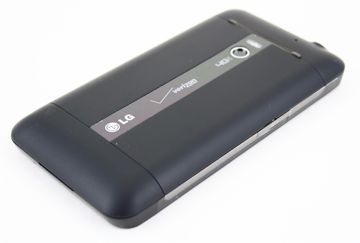
LG's first 4G LTE smartphone for Verizon Wireless is the Revolution. While the only thing revolutionary about the handset is its size, the Revolution does have a lot to offer with its 4.3-inch display, speedy processor, powerful camera, and 4G radio.
Body
I am starting to think that 4G really stands for girth, ginormous, gargantuan, and gawky. None of the first wave of LTE 4G handsets for Verizon Wireless has been dainty, and the Revolution is no exception. It is flat-out huge and feels like a brick in the hand. It's wide, thick, tall, and heavier than I'd like a phone to be. The smooth surfaces and rounded back edges make it sit in the hand without any pain, but it is not easy to wrap your fingers all the way around it. It'll slide into a pocket thanks to the smooth plastics, but no matter what type of pants you're wearing, you're going to know your phone is there.
The quality of the materials is solid, however, and the phone feels very well put together. The plastics fare better than those used by Samsung, which have a decidedly cheap feel to them. The soft-touch paint on the back surface of the Revolution helps in the quality department, but the hard corners at the edge of the display are kind of annoying.
The front is all display. The 4.3-inch screen takes up nearly the whole front surface. LG has provided four capacitive buttons below the screen for accessing the standard Android controls. They offer haptic feedback if you wish, or you can turn that off.
The microUSB port is hidden by a chrome hatch on the left side of the Revolution. Prying it open takes a little bit of work. The volume toggle is on the right side close to the top. The button is a bit hard to find because it has no shape to it at all. The volume up part works great, but the volume down part hardly works at all. It has zero travel and feedback. The hatch covering the microHDMI port is directly below the volume toggle. As with the microUSB hatch, it is difficult to open.
The power/lock key is on the top of the Revolution. It is a little bit hard to find, but the action is good. The 3.5mm headset jack for most stereo headphones is also on top. Alas, there is no dedicated camera button.
In what seems to be a theme for the Revolution, the battery cover is difficult to pry off. I had to resort to breaking out my knife to get sufficient leverage to pop it open. The battery, SIM card and microSD card can all be accessed once the cover is removed. The microSD card is wedged next to the battery in such a way that it is impossible to remove without also removing the battery. Boo.
It's odd that, for such a large phone, LG made some of the controls so small and difficult to use. It's not like the Revolution is lacking for real estate and space for larger buttons. A phone this big to use shouldn't be this hard to use.
The Three S's
Screen
The Revolution packs a now-commonplace 4.3-inch LCD with 480 by 800 pixels. The pixel density is good, though at times it is easy to see individual pixels. It doesn't hold up very well against other similar size/resolution displays in terms of brightness. The Samsung Droid Charge, for example, trounces the Revolution with its Super AMOLED Plus display. The Revolution also didn't look as good in side-by-side tests against the Motorola Droid X2. It's lacking brightness and clarity. It was difficult to use outdoors in sunlight.
Signal
The Revolution is a kick-butt 3G phone. It did an excellent job of remaining connected to Verizon's EVDO 3G network. During most of my tests, the Revolution showed near full signal strength and the device easily passed the NJ vault test (my local super market). It didn't drop any voice calls during my tests, and network speeds for data sessions were consistently zippy.
On the 4G side of things, it was a bit less impressive. The Revolution was able to find Verizon's 4G LTE network around Teterboro airport in NJ, but it never collected more than two bars at a time. Data performance over the 4G network at Teterboro airport (where I was probably the only person using a Verizon LTE device) was outrageously fast — when it worked. Connected to 4G, speed tests were hitting 11.45Mbps peak downloads. But if it waffled and dropped down to 3G, there was no going back to 4G without rebooting the phone. This appears to be a consistent issue across Verizon's LTE devices, and is something we hope Verizon fixes soon.
Sound
The Revolution is a fine voice phone. Most calls I made with it were clear and free of noise, hissing, or other problems. I noticed that voices were ever-so-slightly muffled from time to time, but that's the worst I can say about call quality. Earpiece volume is plenty sufficient at medium levels and bordering on painful when set all the way up. You'll be able to hear and understand most calls just fine. The speakerphone also worked well, with plenty of volume and good quality. Ringtones and alerts are generally loud enough when set all the way up. The vibrate alert was of average strength. You may feel it; you may not. It depends on how you're holding it or where it is stowed.
Battery
Battery life was not awesome, even when just in 3G areas. I had real problems getting the Revolution to last a full day. Across three consecutive days, I pulled the Revolution from the charger at 7AM only to have it die at 8, 10, and 11PM on those days. I tested it heavily, but not as heavily as I would use a device on a business trip or even simply away from home for a day. I'd keep a spare charger handy were I you.
Basics
Menus
The LG Revolution runs Android 2.2.2, which has been slightly tweaked by LG. The base code and functionality is mostly Android, but LG has reskinned it with more colorful icons and such.
The Revolution offers seven customizable home screens, and LG/Verizon have made sure to stuff them full of what they think you might like. Perhaps the most notable aspect is that LG offers an entire home screen widget for interacting with media. The media widget lets you select from photos, videos, music, albums, artists, and playlists in a colorful layout made of album covers and so on. It's neat; I like it.
Another thing I like is the way LG treats the home screen customization. When you press and hold the screen, the first thing the phone does is open a four-panel drawer with all the widgets, shortcuts, folders, and wallpapers right there. Once you select the item you want to install on the home screen, it places a grid on top of the screen, denoting which spots are open on the home screen, where the app, will fit and how many of the boxes it will take up. It gives you a better idea of where widgets are going to land when you let go of them.
The main app menu also looks a bit different. LG has grouped applications by category. For example, the first category in the app menu is Communications. Under it, you'll find contacts, email, Facebook, Gmail, SMS, IM, etc. All the apps under each category look as they normally would, they've merely been sorted into groups. The other groupings out of the box include News & Search, Media, Tools, Applications, and Downloads. Of course, you can fully rearrange, regroup, rename, and rejigger just about everything to do with this app menu.
Last, there's an app called "Deskhome" that assumes you're going to prop the phone up somewhere while at work, or on a nightstand. It shows off an enormous clock and sets the phone in landscape mode.
The settings tools are the same as on every other Android phone.
Calls/Contacts
Calls
The LG Revolution makes use of the stock Android 2.2 phone application, though again LG has given it its own look with a more colorful treatment. The software dialpad is enormous and responsive, and lets you easily jump to the call log, contacts, and groups via tabs along the top.
In-call features run the typical set: send to Bluetooth, speakerphone, mute, and merge calls.
Contacts
The Revolution uses the stock contact application, as well. With access to myriad different contact databases, the Revolution can carry a virtual phone book around in your pocket. Each contact entry lists gobs of details, and makes calling or sending messages a cinch from any contact card. I like that you can easily switch from seeing a contact's information to your history with that contact (calls, emails, IM, SMS, etc.) and even their photos.
Messaging
The LG Revolution doesn't stray too far from the beaten Android messaging path. It offers the same core functions found on most Android devices.
The stock email, Gmail, SMS, Google Talk, voice dialer, and voicemail applications are representin'. I was unable to find any differences between what the Revolution's version of these apps offer when compared to any other Android device.
The instant messaging crowd will be happy to know that there is a generic IM app incuded out of the box. This means you can interact with your Yahoo, AIM, and Windows Live messaging buds.
On the social networking front, both Facebook and Twitter are pre-loaded, as is a catch-all contact/messaging widget for the home screen. Rather than add Twitter or Facebook feeds to this widget, you add contacts. The widget then parses those contacts for social networking status updates, and floats them into the widget. Essentially, it allows you to create a group of people whose Facebook and Twitter updates and activities you can access quickly from the home screen. It's an interesting take on the social feed idea.
Extras
Media
Music
The Media subfolder in the main app menu lets you find your music applications in a snap. Some of the pre-loaded apps include the stock music app, Rhapsody, Slacker, TuneWiki, and the V CAST Media Manager.
The stock music application doesn't bring anything new to the table, unfortunately. You can, however, make use of the new Google Music service if you have one of the beta invites. Either way, music playback sounds good whether it's from local storage or streamed across the internet.
Slacker and Rhapsody work as they do on other handsets/platforms. Their presence doesn't preclude the Revolution from accessing and/or downloading any other music services from the Android Market, such as Pandora.
Notably absent is any way to actually purchase and download music tracks. In order to do that, you'll have to download and install the Amazon MP3 Player application.
Video
The Revolution offers a respectable set of video options out of the box. You get BitBop, BlockBuster, Netflix, SmartShare, the stock video player and the stock YouTube application.
BitBop offers streamed chunks of video, but Netflix and BlockBuster can be used to rent/purchase full-length movies. The stock video application will play sideloaded content as well as any video captured on the device itself. The YouTube app is the same old one that's on every other Android phone.
With the HDMI port available, it is easy to send video content from the device to an HDTV.
Camera
Camera
The Revolution has a 5 megapixel camera with some really nice features. There's no physical camera button, so you have to access it from a shortcut or the app menu. It launches in a snap. The basic shooting screen uses about 80% of the display's real estate as the viewfinder. In the right-most 20%, there is a simple control strip that includes a camcorder toggle, shutter button, and access to the gallery.
Press the screen to pull up a secondary control strip on the left side of the screen, which offers access to camera controls. For anyone who likes to control the behavior of their camera, there's a lot to like. Items such as metering, scene mode, ISO, white balance, color effects, shooting mode and on and on are available to adjust at whim.
When you're ready to take a picture, press the on-screen shutter button. The Revolution takes about a second to focus, and then snaps the image. A review screen pops up instantly. You need to tap the screen to get back to the camera.
As with the relatively high-end LG G2x, the Revolution doesn't offer touch-to-focus. It focuses on whatever is in the center of the viewfinder.
Gallery
The gallery is the stock Android option. Photo albums float in stacks in the main gallery view, and you can sift through them in the chronological timeline in which they are arranged. It has a neat 3D look and feel to it.
Amazingly, the Revolution offers one of the most intense set of editing tools I've ever seen on a phone. You can adjust nearly every aspect of photos from the gallery application, including brightness, effects (fog, motion blur, rain drop effect, angle adjuster, warping), color, filters (18 of them!), text and icons, and on and on. If you can think it up, you can probably do it with the editing tools. Well done!
Photos/Video
Photos
The Revolution's 5 megapixel shooter does a better job that I was expecting it to. Focus was consistently good — meaning mostly sharp photos. I saw only a few images that were a bit soft, and the lighting was bad in those images, which could have been a contributing factor. Color/white balance was nearly always correct, and brightness/exposure were also good.
Indoor shots, as typical, weren't as great as those captured outdoors, but the flash helped a little bit in the darkest places. It's not going to substitute for some good old sunshine, but it will at least light up those smiling faces within an arm's reach or so.
With so many options for controlling the camera's behavior (both before and after taking the picture), the more demanding user will have plenty of opportunity to be creative and tweak their imaging experience. Some might pine for more pixels to play with, but I found the Revolution's 5 million to be plenty useful.
Video
The Revolution captures up to 720p HD video. The video camera software offers many of the same features as found in the still camera. That means you can do a lot of fun stuff before your shoot, though not so much afterward as there aren't any video editing tools.
Based on the quality of the video I shot, you're not going to worry too much about tweaking it after the fact anyway. When set to all the highest quality levels, the Revolution did a great job of snagging video. White balance was good, colors looked bright and rich, focus was good, and the Revolution handled both bright and dimly lit environs with ease.
You'll definitely want to take advantage of all the sharing options found in the Revolution's software, as the video is worth passing along.
Browse/Customize
Browser
The Web browser on the LG Revolution is top notch. It's the standard Android browser, but that's good enough. Web pages loaded very quickly over Verizon's LTE network (when it was available). Even over 3G, web sites loaded quickly. As noted earlier, speed tests topped 11Mbps under LTE coverage, and it was noticeable during web sessions. Web sites jumped to life and populated all the content in a snap.
Customize
The LG Revolution offers the standard laundry list of customization features, but adds a few as well. Some of the new ones include the categorized main menu, and the ability to create and manage those categories. I also like the slightly different take LG uses for setting up home screen widgets, apps, and shortcuts. Wallpapers, ringtones, and all that stuff are laughably easy.
Extras
Apps
Oh, Verizon. You just can't resist cramming as many apps as possible on your Android phones, can you? By my count, there are at least 48 applications on the LG Revolution out of the box, and many of them are wasteful bloatware.
The Revolution is one of the few Verizon phones I've seen to ship without Google Search and Google Maps on board. Instead, you'll find Microsoft's Bing Search and Bing Maps. Both are acceptable substitutes, I suppose, but it's like drinking Coke when you want Pepsi. Gimme the real thing, Verizon. Thankfully, you can download the Google versions from the Android Market if you wish.
Bluetooth
Bluetooth worked without issue on the Revolution. Pairing with mono and stereo headsets, as well as PCs and other phones, was a snap. Sound quality of voice calls through mono headsets was OK, though not as good as normal voice quality. Music sounded acceptable through stereo Bluetooth speakers, but I'd shy away from this feature if you have a good cable handy.
Clock
The Revolution offers the same lockscreen clock that most Android phones do. When initially woken from sleep, it shows the time in a larger, digital read out. The time can be gleaned with but a glance. There is also a full-featured clock application within for all your timing, alarming, and stopwatching needs. The only other way to change the clock behavior of the home screen is to use the Deskhome mode, which puts an even bigger clock across the entire screen.
GPS
As noted earlier, there are no Google Maps on board the Revolution out of the box. Bing Maps works fine, but I don't like it. You can use it to plot directions, and Microsoft has obviously done a lot of work to make mapping results better with the presence of nearby points of interest and so on. You can also spend $10 per month on Verizon's VZ Navigator service. Verizon's service offers excellent directions and mapping, but the fee is a shame (sham?).
Wrap-Up
The LG Revolution offers little to set it apart from the pack if you don't count the LTE radio. The presence of the LTE radio adds bulk and weight to the device, and makes it sometimes-cumbersome phone to use effectively. But the overall good performance of its other features make up for this.
While battery life was a bit disappointing, the Revolution was good for making calls, browsing the web (quickly), taking pictures, shooting video, and playing back all sorts of video content.
LG didn't do too much to set the Android experience apart from the pack, but what it did was tasteful and not overbearing. The added home screen tools and menu organizational elements left me feeling that the Revolution is a bit more organized than some of its peers.
If you live in an LTE market and don't mind the size and battery issues, the Revolution is a solid phone that I'd recommend to anyone who likes to live on the bleeding edge of tech. Is the Revolution revolutionary? Perhaps not, but it certainly is a contender in the early skirmish for LTE supremacy.

Comments
No Mention of Netflix?
Samsung Droid Charge vs. HTC Thunderbolt vs. LG Revolution






















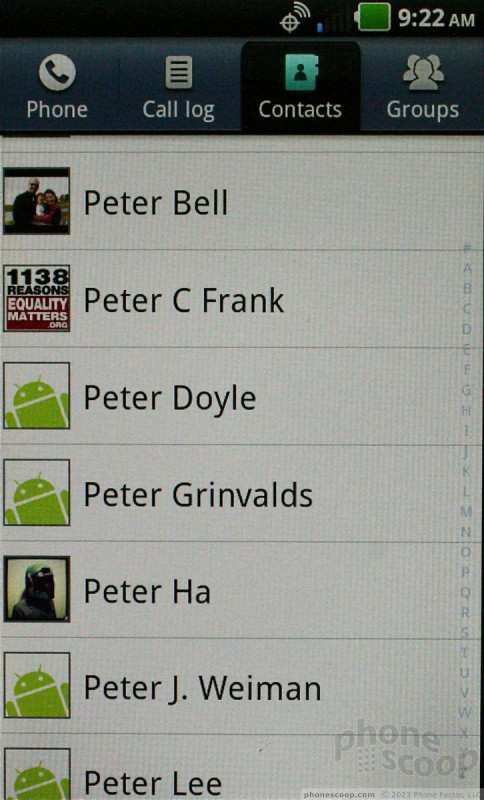






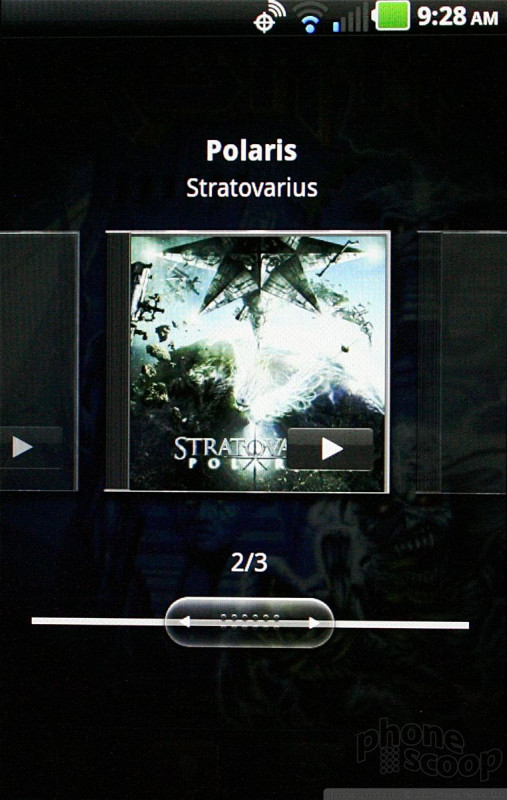












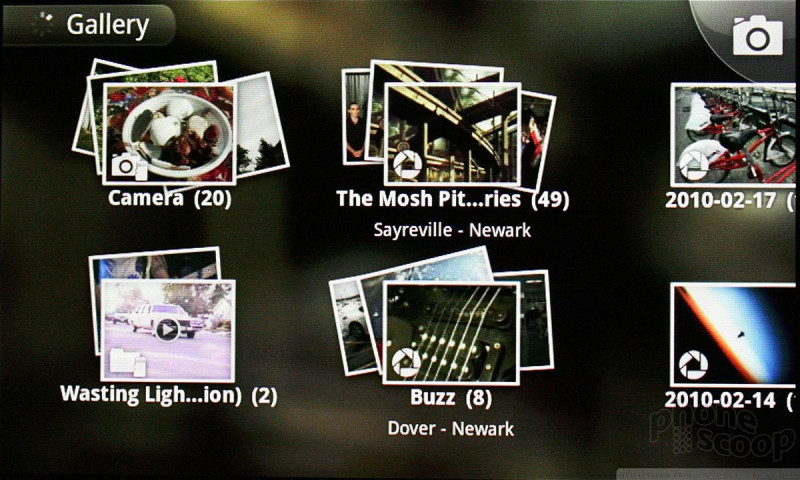





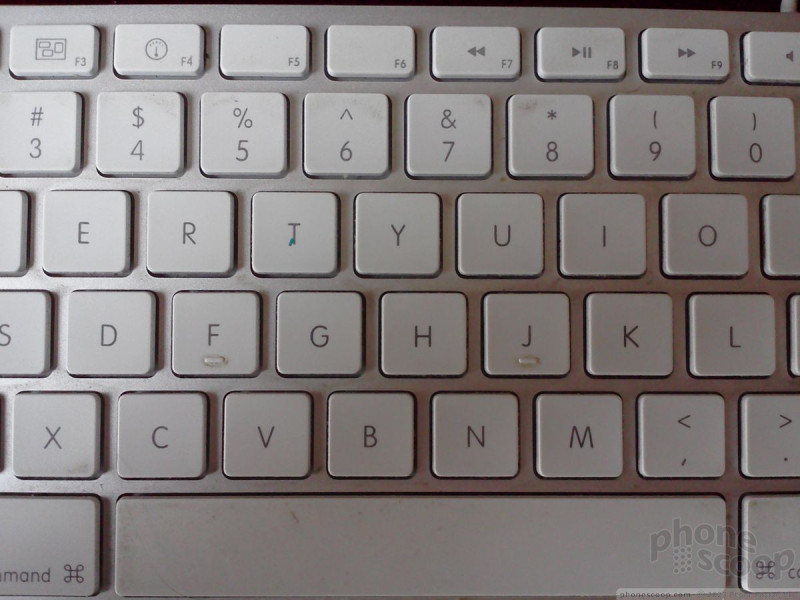

















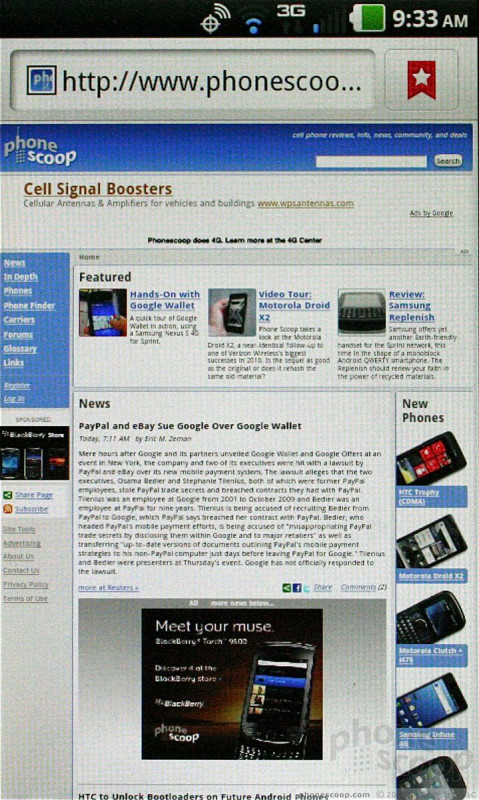



 Hands On with the Motorola razr and razr+ (2024)
Hands On with the Motorola razr and razr+ (2024)
 LG Revolution
LG Revolution



